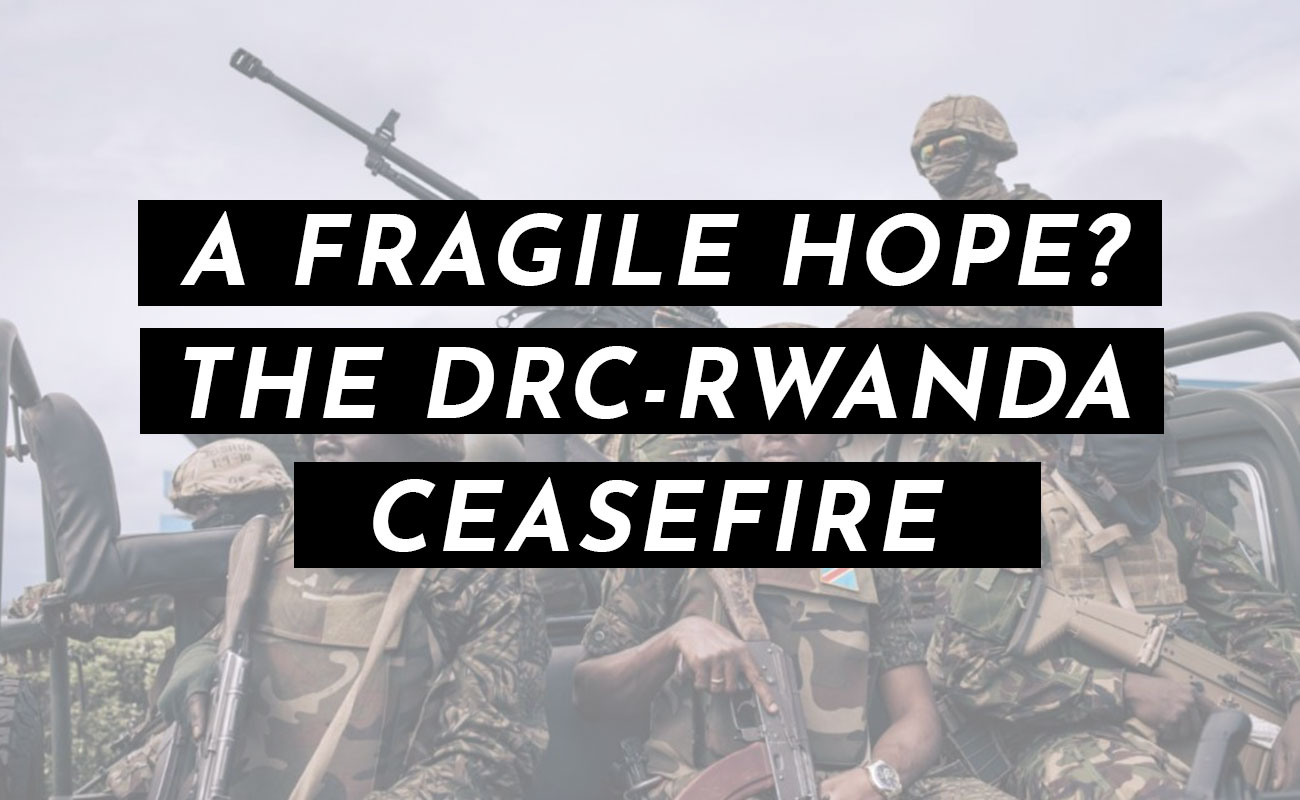
By Francis Assam
The Democratic Republic of Congo has been a hotbed of violence for decades, with conflicts ranging from armed insurgencies to terrorism fuelled by rebel groups. Despite its vast reserves of rare earth minerals, the country has experienced various forms of violence, leading to the displacement of millions and the loss of countless lives. This ongoing turmoil has resulted in a severe humanitarian crisis.
Recent events have seen a rise in violent clashes between the Rwandan-backed M23 rebels and the Congolese armed forces. This long-standing conflict saw a resurgence in 2022 when the M23, a group with roots tracing back to a 2009 peace agreement, reignited its operations. This resurgence marked a significant escalation in the decades-long violence plaguing the eastern provinces of the DRC.
Amidst this backdrop of persistent instability and renewed fighting, a crucial development has emerged, a recently brokered ceasefire agreement between the Democratic Republic of Congo and Rwanda. This blog post will delve into the intricacies of this fragile agreement, examining its potential to bring lasting peace to a region long tormented by conflict. We will explore the historical tensions between the two nations and the role of the M23 rebels in the ongoing violence.
THE CONFLICT BEFORE THE CEASEFIRE
Before the fragile ceasefire between the Democratic Republic of Congo (DRC) and Rwanda on March 18, 2025, eastern DRC faced a major escalation of conflict between the Congolese army (FARDC) and the Rwandan-backed M23 rebels. The M23, named after a 2009 peace accord that was never fully implemented, resurfaced in late 2021 after nearly a decade of dormancy, launching a military campaign in North Kivu.
By March 2022, the M23’s resurgence intensified, claiming to fight for the rights of Congolese Tutsis and the enforcement of the 2009 agreement. Their offensive escalated in late 2024, culminating in the capture of Goma on January 27, 2025, and Bukavu in February, the most significant territorial gains in over a decade.
This rapid advance triggered a humanitarian catastrophe. By March 2025, over seven million people were displaced, with hundreds of thousands fleeing between November 2024 and January 2025. Camps were overwhelmed, with severe shortages of food, water, and healthcare. The conflict led to thousands of deaths, including mass killings and sexual violence, with the UN estimating at least 7,000 fatalities in early 2025.
Diplomatic efforts by regional and international bodies, including the AU, EAC, and SADC, failed to prevent the M23’s advance. Western countries-imposed sanctions on Rwandan officials. The fall of major cities raised fears of a regional war, prompting urgent peace talks that led to the fragile ceasefire.
THE CEASEFIRE AGREEMENT
The ceasefire agreement between the Democratic Republic of Congo (DRC) Felix Tshisekedi and Rwanda Paul Kagame was reached on March 18, 2025, following talks mediated by Qatari Emir, Sheikh Tamim bin Hamad Al Thani. The leaders of both nations committed to an immediate and unconditional ceasefire in eastern DRC. This agreement was intended to halt the ongoing conflict involving the Rwandan-backed M23 rebels.
However, the specifics of the agreement beyond the call for an immediate cessation of hostilities remain largely undisclosed. The Congolese presidency indicated that the terms for the execution of the agreement would be specified in the coming days. A key component mentioned is the establishment of a Joint Military Commission (JMC) composed of the belligerent parties. The JMC’s tasks include investigating ceasefire violations, developing mechanisms to disarm identified militias, and monitoring the withdrawal of foreign troops.
AFTERMATH AND CHALLENGES OF THE CEASEFIRE
Despite the agreement between the two heads of state, the ceasefire has been faced with significant discrepancies and challenges.
Firstly, The M23 rebels themselves stated that the ceasefire “doesn’t concern us”. The leader of the M23 alliance dismissed the appeal, asserting that their forces were not acting on Rwanda’s behalf and would continue to fight. This raises serious doubts about the effectiveness of the DRC-Rwanda agreement in stopping the violence on the ground, as the M23 is a central actor in the conflict.
Furthermore, previous ceasefire attempts between the DRC and Rwanda in April 2023 and July-August 2024 saw a decline in political violence and a cessation of direct hostilities by Rwandan forces. However, these agreements failed to end the fighting between the M23 and proxy militias associated with the Congolese military.
The absence of a specific agreement between both leaders has left many experts puzzled about the ceasefire, seeing it as likely to fail in the long term. Recent reports already indicate that the ceasefire is faltering, with the M23 remaining in a strategic town despite pledging to withdraw, while accusing the Congolese army of violating commitments. This underscores the fragility of the agreement and the deep-seated distrust between the parties involved.
In conclusion, the ceasefire between the DRC and Rwanda represents a critical yet fragile attempt at ending the ongoing violence in eastern Congo. However, the lack of clear agreements and the continued presence of armed groups like the M23 raise doubts about its long-term viability. Previous ceasefires have failed to bring lasting peace, and early reports suggest that this one may face a similar fate. Without concrete mechanisms for enforcement and genuine political will from all sides, the conflict risks reigniting and prolonging the suffering of millions in the region.
Recent Posts
Categories
- Blog (79)
- News/Press Release (14)
- Ongoing Projects (1)
- Past Projects (1)
